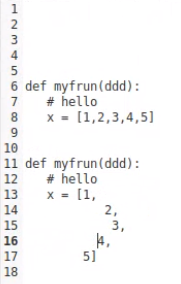July 13 2021 Raspberry Pi, AWK, Perl, Python, HTML, W3.CSS, Windows 11
Brian had been caught in Covid-19 related travel problems and was having to join us using his Raspberry Pi tethered to his smartphone to create an Ethernet connection. He commented that he was able to use iView Australia without any problems.
Darren had been comparing AWK and Perl.
AWK is named after Alfred Aho, Peter Wineberger, and Brian Kernighan, who designed it in the 1970s to simplify text processing on Unix.
Perl has a single originator, Larry Wall, who designed the earliest versions of Perl, about 10 years after AWK. Perl has a special archive of code, documentation, &c. called CPAN.
AWK and Perl have quite different design philosophies. AWK programs aim to be small, simple and elegant, and to do one thing at a time. Perl aims to be complete and as useful as needed, no matter how large your code gets.
In Perl:—
- We start with a while loop. It iterates down a file. It stores each line in tern in the default string.
- The next line parses the default string, splitting it on spaces, assigning it to an array called line.
- The last line simply outputs two elements of line.
while(<>){
@line= split ;
print (@line[2], @line[3]);
}
In AWK:—
- The default control structure is to iterate down its input, matching each line to a pattern and processing the pattern.
- The default pattern is to match all input on a line.
- The default processing is to output data.
- All we need to do is the indexing!
{ $3 $4;}
There was to be a Perl 6 but this has now morphed into Raku.
Initially Perl was used for HTML server side scripting but PHP, a derivative of Perl, took over this role.
Darren went on to comment on the confusion created by HTML5 and John responded that HTML5 has brought a lot more features and also got rid of the multiple <div>s which make code so difficult to read.
Darren commented that in Python indentation is largely mandatory; Nick responded that the default is to indent but you can override it and Bernard gave examples of a snip of Python correctly indented followed by the list being arbitrarily indented:

He commented that the second example allows you to handle long lines etc.
Comparing Perl and Python, Nick noted that Perl allows different ways of doing the same thing whereas Python aims to have only one way though Bernard commented that this is not always achieved.
Darren asked about configuring his keyboard under KDE and John H said you could normally do this under System settings->Input devices->Keyboard but he was unable to locate this on the laptop he was using. [Subsequent investigation by John of his desktop and notebook showed that this setting was absent on the desktop but present on the notebook suggesting that there may be a problem with KDE’s hardware detection.]
Bernard had been exploring the examples in W3.CSS and demonstrated a number of examples of how changes to a layout could be automated to suit the dimensions of the device being used.
Brian shared the problems he had been having booting a Raspberry Pi image on an SSD card; David commented that they had been promising proper booting for the Raspberry Pi 4 using a standard interface but this did not appear to have been delivered.
After a detour to discuss imprisonment rates in various countries, Brian asked about using eMMC cards instead of an SSD. David commented that these tended to be used for booting and John H added that his PCSpecialist laptop came with a 64GB MMC on which he had installed the root and swap partitions and the option to add another drive which he had specified and used for /home.
Brian wondered why John McAfee’s later life had not had any impact on the reputation of the McAfee virus detection software and John suggested that it was so long ago that he had sold up and had not been involved in it since then.
We noted that Windows 11 will be rolling out on new hardware later this year and available for Windows 10 users to update free until 2025. Reports suggested that the software was not really ready and John speculated that it might be another opportunity as with XP to prompt people to change to Linux.
John H wondered whether there was an EFI boot option for the Raspberry Pi and David commented that the chainloader EFI had not been developed.
After Brian had departed, David found what he thought might be a solution to Brian’s SSD problem.
David went on to share how he had managed to let vat of resin run out during some 3D printing; even trying to carve something out of what had emerged was not practical as it is not a good material to work with.
He mentioned that the TV weatherman had shown a hedgehog in a ball being rolled over by another hedgehog and there are various theories about why they do this including courtship rituals but Bernard commented that his footage suggested that it was more likely to be aggression.
This discussion prompted John H to share a page from the British Library website on killer rabbits and David the rum goings on at Esholt Priory.
Past Meetings